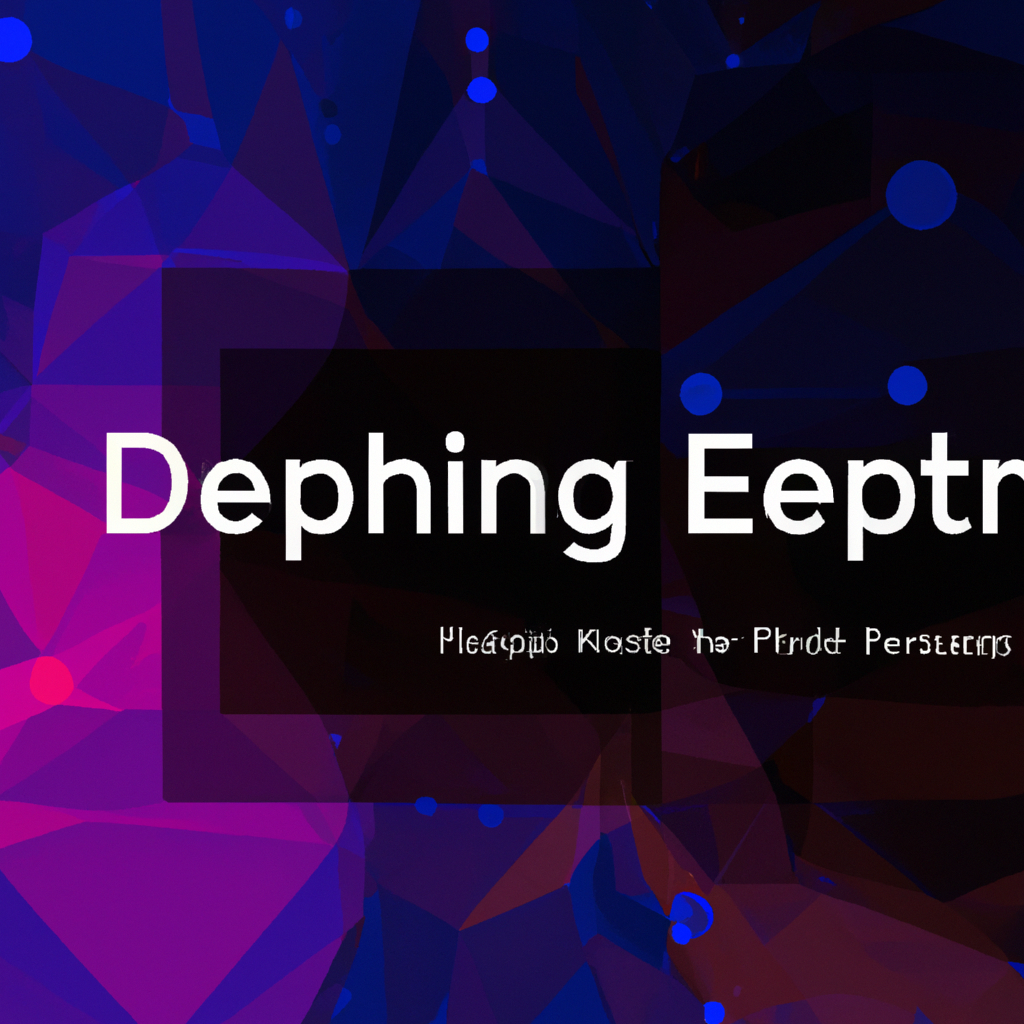Exploring the Applications of Deep Learning in Natural Language Understanding
Table of Contents
Exploring the Applications of Deep Learning in Natural Language Understanding
# Introduction:
In recent years, the field of natural language understanding (NLU) has witnessed a significant transformation due to the advancements in deep learning techniques. Deep learning, a subset of machine learning, has revolutionized various domains, including computer vision, speech recognition, and natural language processing. This article delves into the applications of deep learning in NLU, highlighting both the new trends and classic algorithms that have contributed to the advancements in this field.
# 1. Understanding Natural Language:
Natural language understanding refers to the ability of machines to comprehend and interpret human language. It involves tasks such as sentiment analysis, information extraction, question answering, and text summarization. Traditional approaches to NLU relied on handcrafted features and rule-based systems, which often struggled to capture the complexity and nuances of human language. Deep learning, on the other hand, has shown great promise in addressing these challenges.
# 2. Deep Learning Fundamentals:
Deep learning algorithms are inspired by the structure and function of the human brain. They are characterized by the use of artificial neural networks with multiple layers of interconnected nodes, also known as neurons. These networks learn hierarchical representations of data, enabling them to automatically discover intricate patterns and features. The most widely used deep learning architectures in NLU are recurrent neural networks (RNNs) and convolutional neural networks (CNNs).
# 3. Recurrent Neural Networks:
RNNs are particularly effective in processing sequential data, making them well-suited for tasks like language modeling, machine translation, and sentiment analysis. The key idea behind RNNs is the introduction of recurrent connections, allowing information to persist across different time steps. This enables the network to retain context and capture dependencies between words in a sentence. Long Short-Term Memory (LSTM) and Gated Recurrent Unit (GRU) are popular variants of RNNs that overcome the vanishing and exploding gradient problems.
# 4. Convolutional Neural Networks:
CNNs, originally designed for image analysis, have found applications in NLU as well. They are adept at capturing local patterns and spatial relationships within data. In the context of NLU, CNNs can be used for tasks like text classification, named entity recognition, and relation extraction. By treating words or characters as 1D inputs, CNNs can learn meaningful representations that capture syntactic and semantic information. The use of convolutional filters and pooling operations enables hierarchical feature extraction.
# 5. Word Embeddings:
One of the key breakthroughs in NLU facilitated by deep learning is the concept of word embeddings. Word embeddings are dense, low-dimensional representations of words that capture semantic and syntactic relationships between them. Techniques such as Word2Vec, GloVe, and FastText have revolutionized the way machines understand and process textual data. These embeddings enable algorithms to leverage pre-trained language models and transfer knowledge to downstream NLU tasks.
# 6. Transfer Learning and Pre-training:
Deep learning has also paved the way for transfer learning and pre-training in NLU. Transfer learning involves leveraging knowledge learned from one task to improve performance on another related task. Pre-training, on the other hand, involves training a model on a large amount of unlabeled data before fine-tuning it on a specific task. These techniques have resulted in significant performance gains, especially in scenarios where labeled data is scarce.
# 7. Attention Mechanisms:
Attention mechanisms have become a staple in many deep learning models for NLU. Attention allows the model to focus on different parts of the input, assigning different weights to different words or phrases based on their relevance. This has proven to be particularly valuable in tasks like machine translation and text summarization, where the model needs to selectively attend to specific parts of the input sequence.
# 8. Transformer Models:
Transformer models have emerged as a powerful architecture for various NLU tasks. The Transformer architecture, introduced by Vaswani et al. in 2017, relies solely on attention mechanisms and avoids recurrent connections. Transformers have achieved state-of-the-art performance in machine translation, language modeling, and question answering. The pre-trained models like BERT (Bidirectional Encoder Representations from Transformers) and GPT (Generative Pre-trained Transformer) have become benchmarks in many NLU tasks.
# Conclusion:
Deep learning has revolutionized natural language understanding, enabling machines to comprehend and interpret human language with unprecedented accuracy. The applications of deep learning in NLU are vast and continue to expand rapidly. From recurrent neural networks to convolutional neural networks, word embeddings to attention mechanisms, and transformer models to transfer learning, these techniques have propelled the field forward and opened up new avenues for research and development. As deep learning continues to evolve, we can expect even more innovative applications and breakthroughs in the realm of natural language understanding.
# Conclusion
That its folks! Thank you for following up until here, and if you have any question or just want to chat, send me a message on GitHub of this project or an email. Am I doing it right?
https://github.com/lbenicio.github.io

